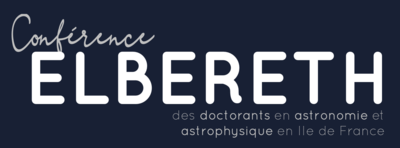Orateur
Description
Direct observations are required to constrain the physical properties of exoplanet atmospheres. Direct imaging is still challenging as it requires to achieve very high contrasts at small separations. The current generation of instruments are reaching contrast performance that allows us to observe young and warm giant planets that are separated by a few AU from their host star, a favorable configuration to mitigate the diffracted starlight contamination. The Mid-IR Instrument (MIRI) of the recently launched James Webb Space Telescope is equipped with a Medium Resolution Spectrograph (MRS) covering a large spectral range from 5 to 28 microns. At such wavelengths, the star to planet ratio is more favorable than in the near IR and provides access to molecular signatures that are relevant to characterize exoplanet atmospheres at a spectral resolution as large as 3500. We are investigating the feasibility to retrieve those molecules with the method called the “molecular mapping” which allows to disentangle spectrally and spatially the light from the star and the planet.
We will present results of performance estimation based on simulations of MIRI observations. Simulating many known direct imaged systems, we detect and retrieve molecules such as CO, CH4, NH3, H2O, PH3, HCN and using a large grid of Exo-REM atmospheric models, we are exploring the sensitivity of the method to determine atmospheric parameters. Finally, we will present a parametric analysis of MIRI/MRS detection capacity, studying the impact of the spectral type and the angular separation on the method’s performance. Once combined with near IR data or coronographic data, MIRI-MRS will have the capacity to improve the characterization of exoplanetary atmospheres and to derive constraints on planetary formation.
Day constaints
sauf le 24 en fin après-midi
| Field | Planetology (including small bodies and exoplanets) |
|---|

